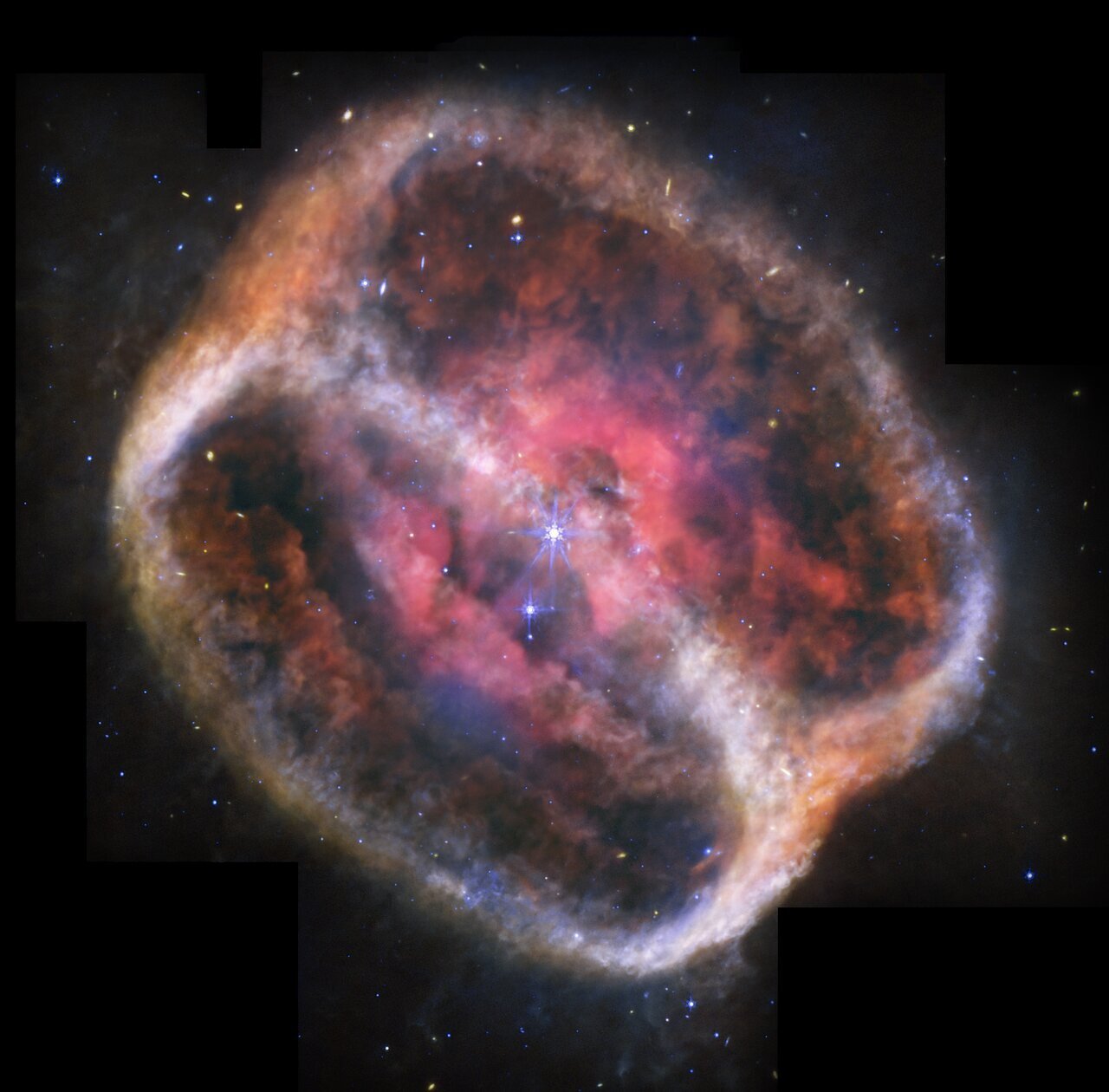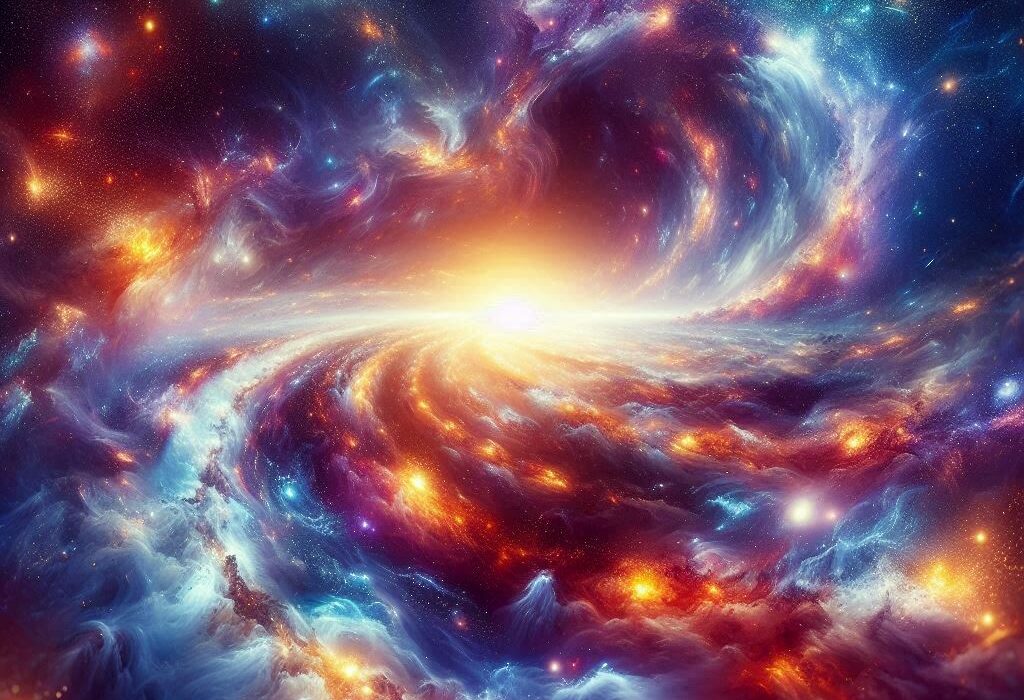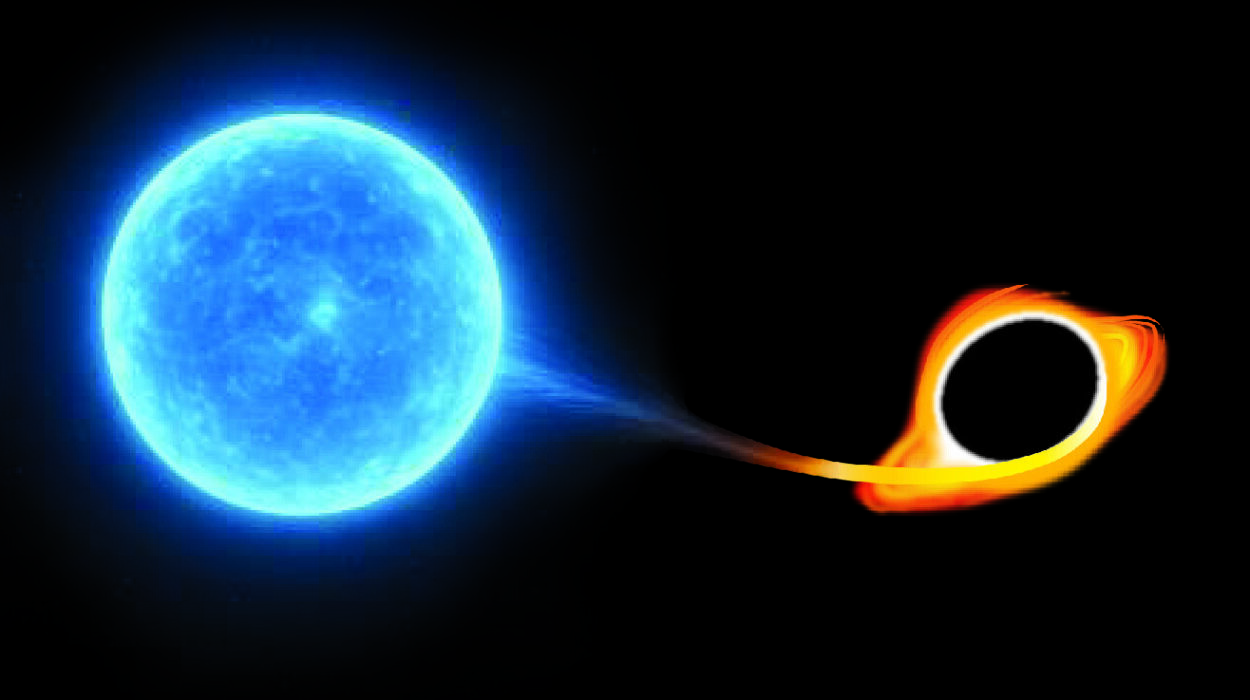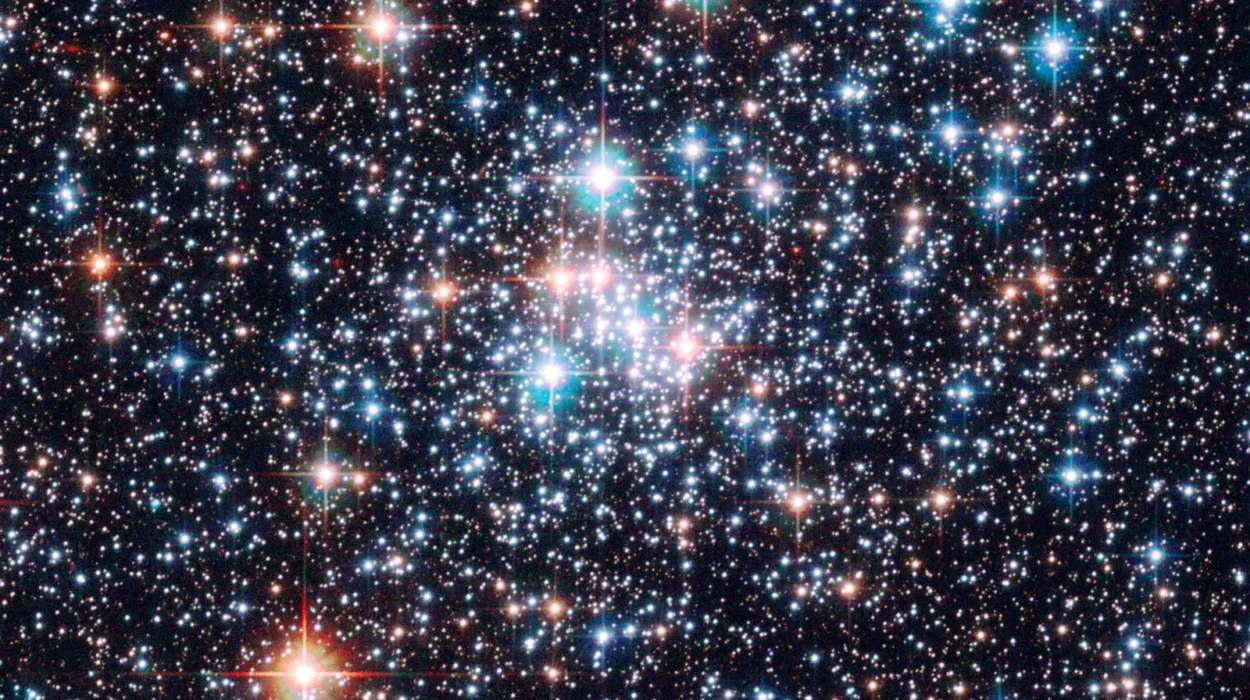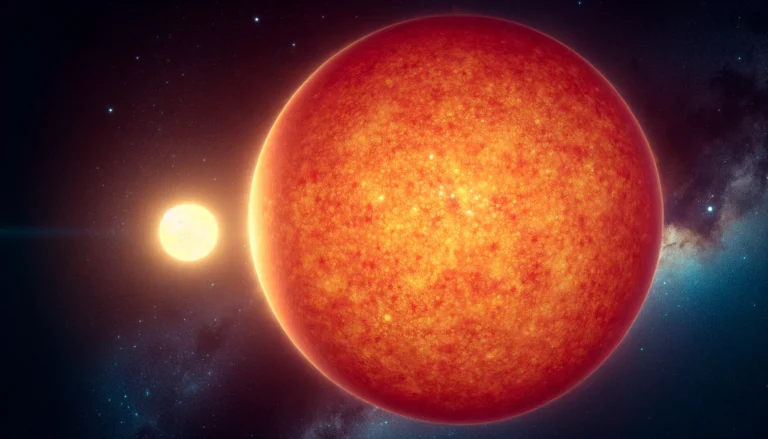The universe is full of breathtaking and enigmatic phenomena, none more captivating than the spectacular display of death and rebirth that unfolds in the nebulae surrounding dying stars. One such celestial spectacle, NGC 1514, has been a source of fascination for astronomers since its discovery in the 18th century. Recently, thanks to the cutting-edge technology of the James Webb Space Telescope (JWST), scientists have been able to peer into this nebula with unparalleled clarity, revealing intricate details about its formation, structure, and composition. What was once a distant, blurry object in the night sky is now a vibrant, dynamic scene of cosmic transformation.
At the heart of NGC 1514 lies the breathtaking interaction of two stars, one of which has reached the end of its life cycle and is expelling material into space. Webb’s mid-infrared observations have illuminated the nebula in a way never before possible, offering fresh insights into the behavior of the dying star, its winds, and the resulting structure of the surrounding gas and dust.
The History and Significance of NGC 1514
NGC 1514, also known as the “Crystal Ball Nebula,” lies approximately 1,500 light-years away in the Taurus constellation. This planetary nebula, first observed by astronomer William Herschel in 1790, has long been studied by scientists. Herschel famously described it as the “first deep sky object to appear genuinely cloudy,” and at that time, he couldn’t resolve the nebula into individual stars as he had with other objects he had cataloged.
For centuries, the nebula remained a curious yet relatively unremarkable object in the night sky. But with the advancement of technology and the launch of the James Webb Space Telescope, NGC 1514 has undergone a remarkable transformation in terms of scientific understanding. Thanks to the JWST’s unprecedented capabilities in mid-infrared imaging, astronomers have now gained a deeper, more detailed view of the nebula, allowing them to unravel its secrets.
The Central Stars: A Duo in Dance
At the very heart of NGC 1514 lies a pair of stars, whose dynamic interaction has shaped the nebula’s structure. These two stars, which appear as a single point of light in Webb’s observations, are engaged in a tight, elliptical orbit. Their orbital period is a mere nine years, and as they spiral around one another, their gravitational influence causes disruptions in the surrounding gas and dust.
The primary star in this system was once several times more massive than our Sun. However, like all massive stars, it eventually exhausted its nuclear fuel and entered the final stages of its life cycle. As it expanded into a red giant and later shed its outer layers, it left behind a hot, dense core—the white dwarf star we see today. This star is responsible for much of the energetic processes driving the formation of the nebula.
The interaction between the two stars plays a significant role in the nebula’s distinctive shape. Instead of a uniform, spherical expansion of gas and dust, the material is ejected in intricate, ring-like structures. The companion star’s gravitational pull may have caused the material to be expelled in this unique, structured manner, forming rings rather than a simple shell of gas. This unusual shape is just one of the many mysteries scientists are working to unravel.
The Hourglass Shape: Unraveling the Nebula’s Geometry
One of the most striking features of NGC 1514, revealed by Webb’s observations, is its hourglass-like shape. From our vantage point, the nebula appears to have two distinct ends, with the dust and gas arranged in a V-like pattern that tapers toward the center. This distinctive shape is likely the result of complex interactions between the dying star and its companion, which may have caused the gas to be funneled and shaped in this manner.
The nebula is tilted at a 60-degree angle to our line of sight, which makes it look as if it were being poured out like the contents of a can. However, scientists suggest that the true shape of NGC 1514 is more akin to an hourglass, with its narrow waist represented by the region of orange dust near the top left and bottom right corners of the image. These areas, where the material is densest, provide the clearest indication of the nebula’s pinched waist.
Further analysis reveals that the nebula’s “sides” also play a crucial role in its three-dimensional structure. The subtle, semi-transparent orange clouds that fill the space between the rings contribute to the nebula’s overall form, adding a sense of depth and dimension that was previously difficult to discern. These clouds, which are made up of gas and dust, are more diffuse and appear less concentrated than the rings themselves, but they are an essential component of the nebula’s full geometry.
The Dappled Rings: A Network of Structures
One of the most intriguing aspects of NGC 1514’s appearance, as revealed by the JWST, is the dappled texture of the nebula’s rings. These rings, which were first detected in 2010, are now seen with remarkable clarity, showing a network of complex structures. The rings are unevenly illuminated, with certain areas appearing more diffuse and fuzzy than others. This variation in brightness is a direct result of the interaction between the ejected material and the ultraviolet light from the white dwarf star.
The primary material in the rings is dust—very small grains that, when exposed to ultraviolet radiation, heat up enough to become detectable by Webb’s infrared sensors. These dust grains are primarily composed of elements such as oxygen, carbon, and other metals. The resulting textures in the rings are a result of varying densities and compositions of the material.
At the center of the nebula, the presence of oxygen is particularly noticeable. Webb’s mid-infrared observations reveal clumps of oxygen-rich material in the central region, especially at the edges of the nebula’s “bubbles” or holes. These holes are formed when faster-moving material punches through the surrounding gas and dust, leaving behind cavities that provide insight into the dynamics of the nebula’s expansion.
The Absence of Carbon: A Surprising Finding
NGC 1514 is also noteworthy for what it lacks—carbon-based molecules, such as polycyclic aromatic hydrocarbons (PAHs), which are commonly found in other planetary nebulae. PAHs are complex molecules that are often associated with the cooling and chemical processes in such nebulae. However, Webb’s observations have found no trace of these molecules in NGC 1514.
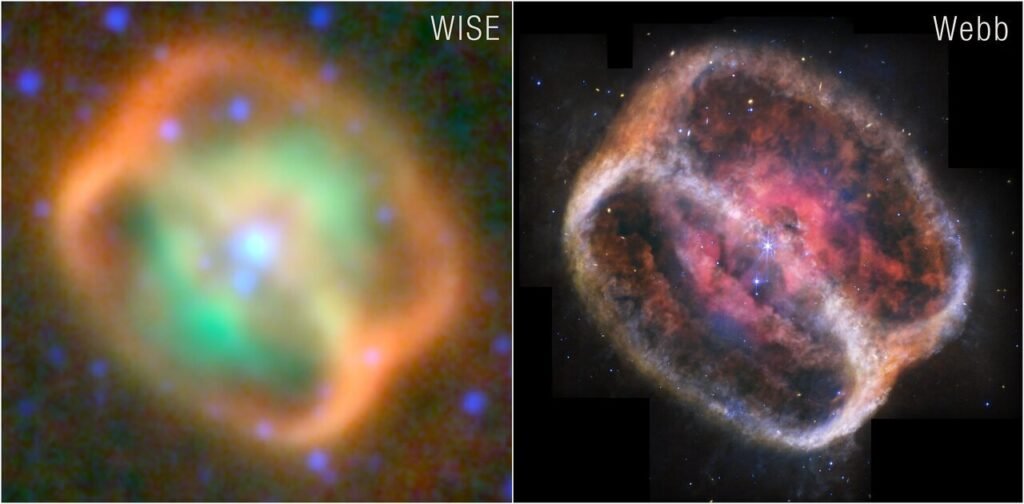
Scientists speculate that the absence of carbon-based molecules could be due to the unique conditions in this particular nebula. The orbital dynamics of the two central stars may have caused the ejected material to mix and disperse in such a way that complex molecules had insufficient time to form. Additionally, the simpler chemical composition of the nebula allows the light from the stars to travel farther, which is why the rings appear so faint and cloud-like in the infrared spectrum.
The Bright Blue Star: A Curious Visitor
As we marvel at the complexity of NGC 1514, we also encounter a bright blue star to the lower left of the image. With diffraction spikes smaller than those of the central stars, this star may seem to be part of the nebula at first glance. However, closer inspection reveals that this star is not associated with the nebula at all. Instead, it lies much closer to us, in the foreground of the image. This star serves as a reminder of the vast distances and complex interactions that exist in our universe.
A Nebula in Motion: The Future of NGC 1514
The nebula surrounding NGC 1514 is still evolving, and its appearance will continue to change over the next several thousand years. The processes that shaped the nebula have been underway for at least 4,000 years, but the system is far from static. The two central stars will continue to influence the nebula, and the material that was ejected will slowly disperse into the surrounding interstellar medium.
Looking ahead, scientists hope to continue observing NGC 1514 and other planetary nebulae in greater detail. As technology advances, future telescopes and instruments will enable astronomers to explore even more distant nebulae, shedding light on the final stages of stellar evolution and the complex interactions that shape the cosmos.
In the meantime, the James Webb Space Telescope remains at the forefront of this scientific exploration, offering a window into the heart of dying stars and the stunning beauty of their final act.
Conclusion: A Cosmic Masterpiece
NGC 1514, with its intricate rings and dynamic hourglass shape, offers a stunning example of the life cycle of stars and the processes that govern the universe. Thanks to the revolutionary capabilities of the James Webb Space Telescope, we now have a clearer understanding of the nebula’s formation, structure, and the forces at play in its creation. As we continue to explore these cosmic wonders, NGC 1514 stands as a testament to the power of technology and the unending quest for knowledge in the vast, mysterious universe.
